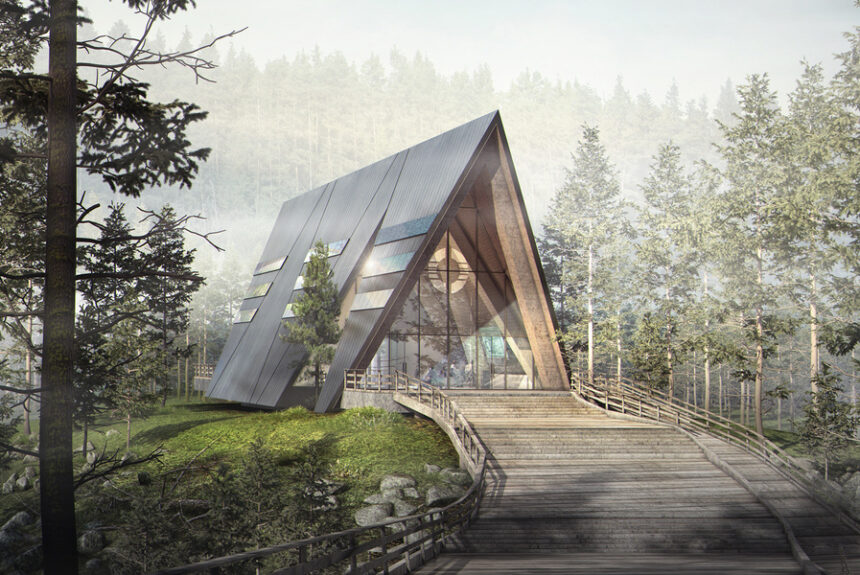The Russian invasion of Ukraine has underscored America’s pressing need to diversify its energy supply. To achieve true energy security, under-utilized power sources like nuclear energy ought to be seriously revisited and placed at the center stage of public discourse. Enter small modular reactors (SMRs), an innovative alternative to traditional nuclear power.
Easier and theoretically cheaper to deploy than your standard nuclear reactors, SMRs are essentially bite-size versions of conventional nuclear power plants. These smaller reactors can generate up to 300 megawatts of electricity (MWe) per unit, or about one-third of the electrical output of a full-scale reactor (Nuclear reactors average 700+ MWe, according to the International Atomic Energy Agency (IAEA)).
>>>READ: X-energy Brings Advanced Nuclear Power Closer to Market Viability
In terms of energy production, SMRs generate energy much in the same way regular nuclear power plants do: via the process of nuclear fission, which converts heat from a controlled nuclear chain reaction inside the reactor into electricity for everyday residential and commercial use.
However, SMRs differ from existing reactors in some critical respects. For starters, SMRs are much smaller than your standard run-off-the-mill reactors; the units measure roughly a fraction of the size of a traditional nuclear power plant, according to IAEA. SMRs are also modular in composition, making them easier to transport and install than their larger and more familiar counterparts. In fact, the reactor units can be purchased pre-assembled from a factory and installed directly on-site, according to the Office of Nuclear Energy. Unlike conventional nuclear power plants, SMRs do not need to be custom-designed for a specific location, meaning clients can benefit from tremendous savings in terms of up-front costs and building delays.
Due to their smaller footprint, SMRs are also significantly cheaper than their forerunners, which have been around for over 70 years. Their lower price tag and flexible design make them ideal for installation in rural areas or areas lacking suitable energy infrastructure. According to the International Energy Forum, the low-carbon energy solution can be seamlessly incorporated into the existing electrical grid or remain off-grid, opening up areas that were previously inaccessible to nuclear energy. This heightened portability allows for easy scaling to complement the energy-intermittent output of renewables.
And while traditional nuclear power is already our safest energy source, SMRs include features that make them even safer. The next-generation reactor units rely on a ‘passive’ system that features advanced safety components like emergency cooling, core heat removal, and pressure relief valves. In contrast, full-scale nuclear reactors operate on an ‘active’ basis in the sense that they require manual human intervention and/or mechanical and electrical manipulation from engineered components to shut down. Many SMR companies are also creatively solving the nuclear waste issue by creating units that run on spent fuel.
These enhanced safety margins, in conjunction with SMRs’ innovative approach to waste, greatly mitigate the risk of a potential nuclear accident (a supremely rare event notwithstanding).
A few companies have taken note.
Bill Gates-founded nuclear innovation company TerraPower is currently building the first-of-its-kind high-tech nuclear reactor in Kemmerer, Wyoming, a small town with deep links to coal mining. The $4 billion Natrium reactor demonstration plant will receive about $1.9 billion in funding from the federal government, specifically as a grant from the Department of Energy’s Advanced Reactor Demonstration Program. The other half will come from TerraPower and private investors.
Portland, OR-based nuclear tech company NuScale is also developing its own breed of advanced small modular reactors. The company’s flagship reactor, the NuScale Power Module (NPM), became the first SMR to receive official approval from the U.S. government in 2020, according to the U.S. Nuclear Regulatory Commission.
>>>READ: The Private Sector is Driving Cross-Atlantic Nuclear Energy Partnerships
NuScale’s NPM was recognized for its advanced design and superb safety features, which eliminate the need for two-thirds of the safety provisions required in standard commercial reactors. Like all SMRs, NuScale’s modern reactor features a high level of passive or inherent safety components such as a high-pressure containment vessel, a decay heat removal system, an underground reactor pool, and an emergency core cooling system. The industry-leading SMR developer went public this May.
Other products in the SMR space that are gaining traction include BWX Technologies’ mobile microreactor, Kairos Powers’ ‘Hermes’ low-power demonstration reactor, and the Westinghouse eVinci micro reactor.
Nuclear is by far the most reliable, abundant, and clean energy source available at our disposal. Approximately 19% of our electricity currently comes from nuclear, according to data from the U.S. Energy Information Administration. Meanwhile, nearly two-thirds of our energy still comes from fossil fuels like coal, oil, and natural gas. In order to close the gap between the variable output of renewables and speed up the transition to net-zero, more investment and innovation in the sector is required.
Nathalie Voit is a freelance content creator and a graduate of the University of Florida. She is an alumni of The Heritage Foundation’s Young Leaders Program.
The views and opinions expressed are those of the author’s and do not necessarily reflect the official policy or position of C3.
